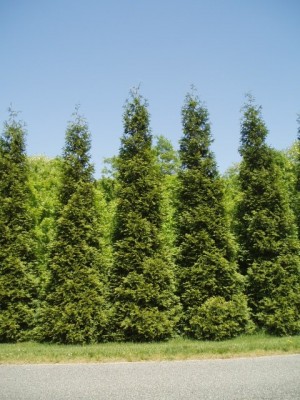Thuja standishii × plicata 'Green Giant' is a very fast growing selection of hybrid arborvitae. It forms a narrowly conical to pyramidal tree with sprays of rather open foliage, rich glossy green above, paler green below. Typical rate of growth in most areas is up to 5 feet (1.6 m) per year, resulting in a large tree 50 feet (15 m) tall by 5 feet (2 m) wide after 10 years in the landscape.
D.T. Poulsen nursery of Copenhagen, Denmark, selected and introduced this cultivar in the mid-1960s. It is marketed as a very effective tree for screening and is regarded as a hardier substitute for Leyland cypress (Cupressus × leylandii), particularly in North America!

